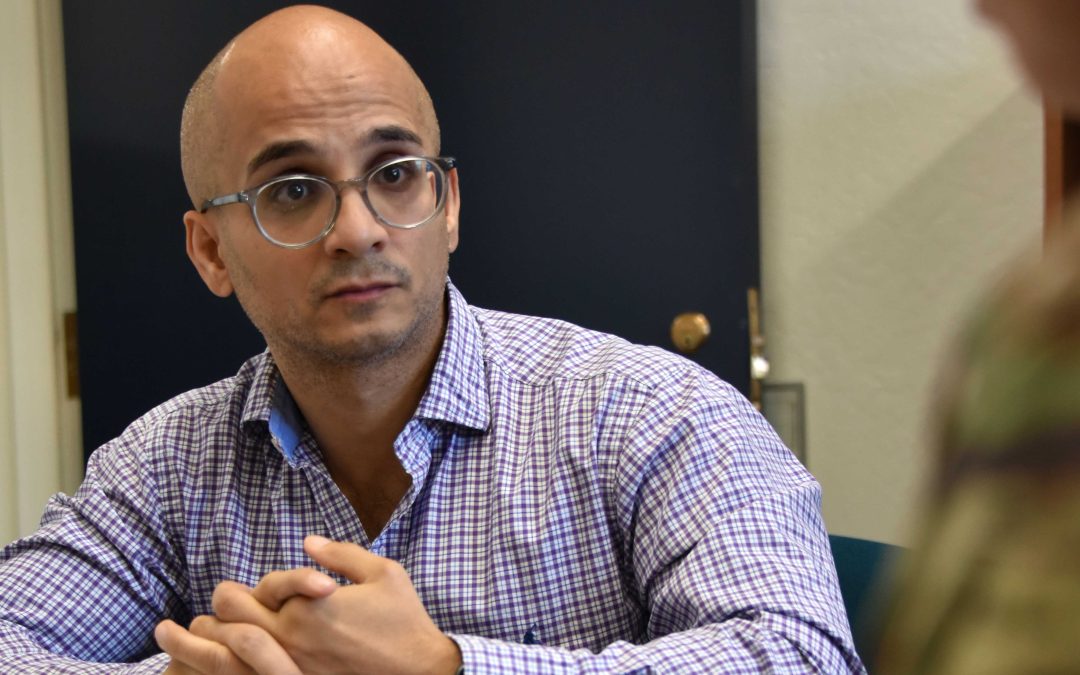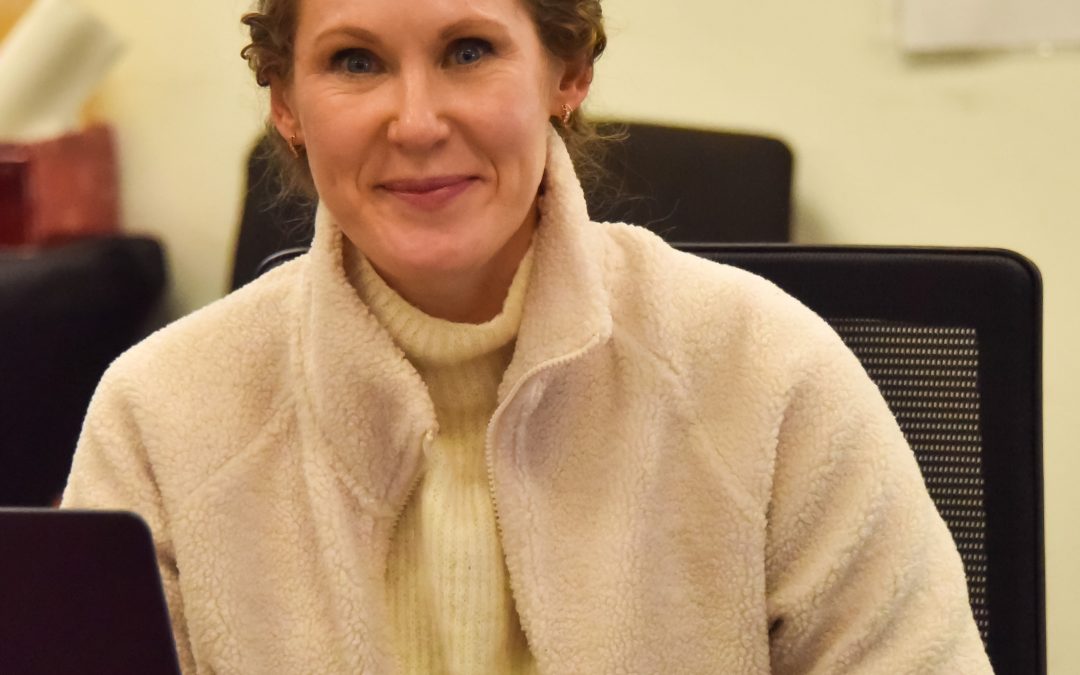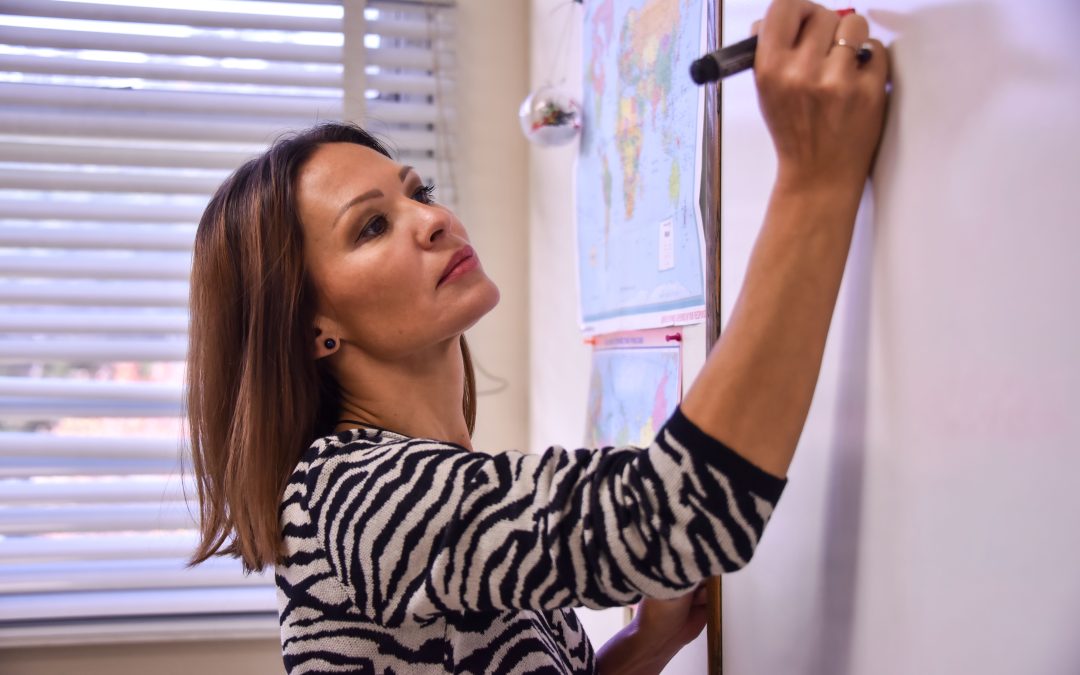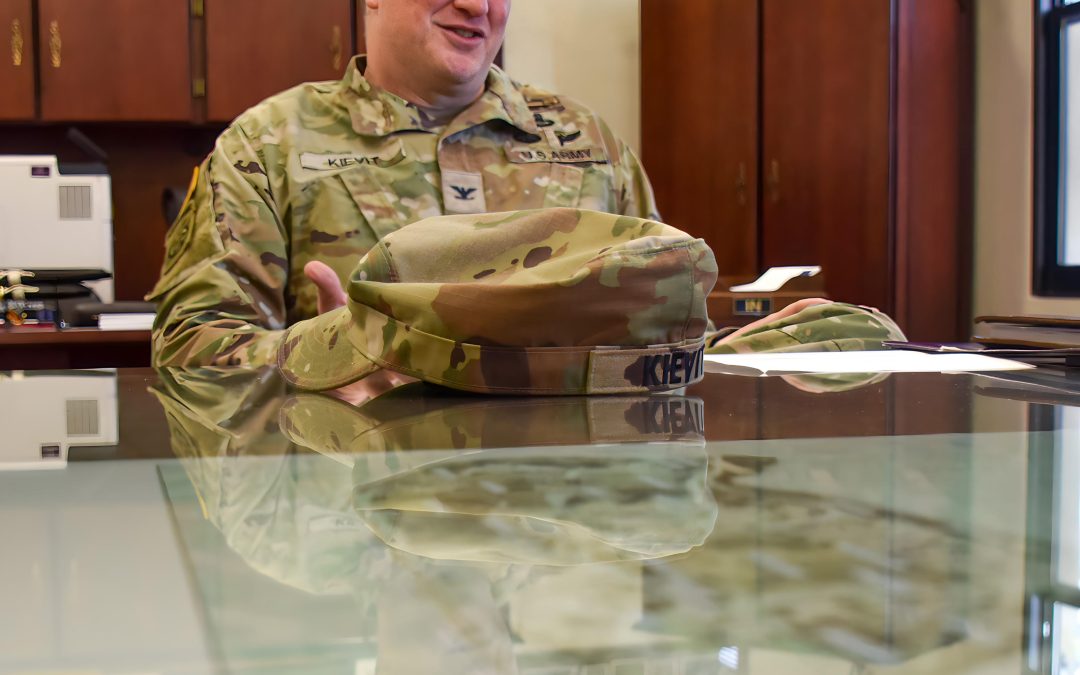By Patrick Bray
DLIFLC Public Affairs
Editor’s note: This article is a feature from the Foreign Area Officer program’s monthly officer professional development series at DLIFLC.
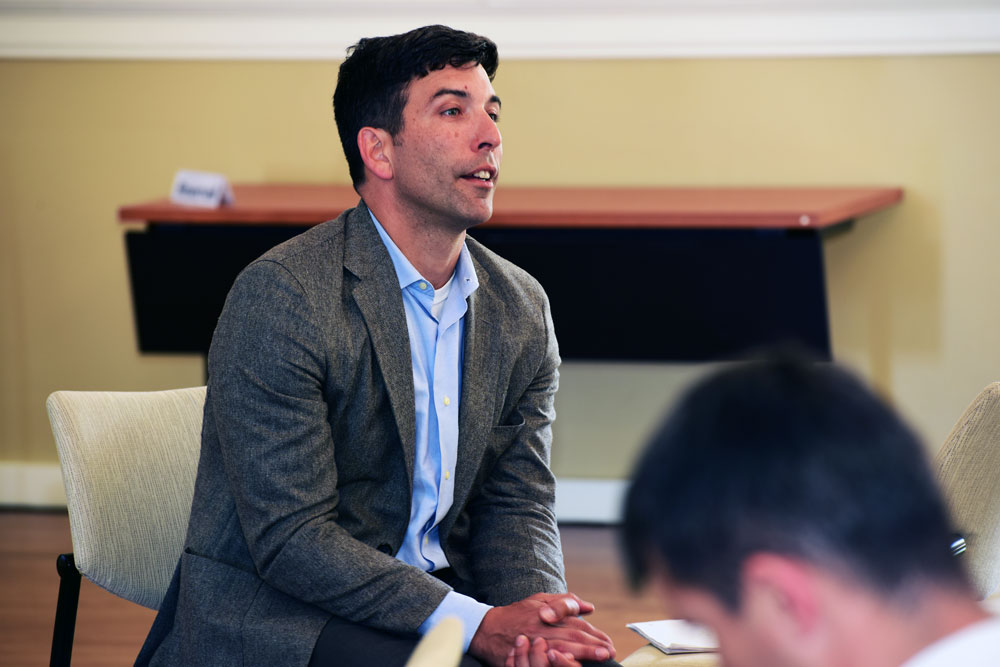
Dr. Craig Whiteside, a professor at the Naval War College Monterey located on the campus of the Naval Postgraduate School in Monterey, spoke about the most recent National Security Strategy with Foreign Area Officers in language training at the Defense Language Institute Foreign Language Center April 21. (Photo by Patrick Bray, DLIFLC Public Affairs)
MONTEREY, Calif. – Dr. Craig Whiteside, a professor at the Naval War College Monterey located on the campus of the Naval Postgraduate School in Monterey, spoke about the most recent National Security Strategy with Foreign Area Officers in language training at the Defense Language Institute Foreign Language Center April 21.
The National Security Strategy is a document prepared by the executive branch of the U.S. Government for the Congress, which outlines the major national security concerns of the U.S. and how to deal with them.
The Goldwater–Nichols Act of 1986 required that the President issue a National Security Strategy annually. However, according to Whiteside, though the strategy is “supposed to be done every year, it is not a strategy if you change it every year.”
“What is a strategy?” Whiteside asked as he began his discussion. “It’s really big picture stuff. How do we achieve our end state, what are the ways, and what are the means?”
Whiteside focused most of his discussion on the differences between the 2010 and 2015 National Security Strategy. The 2010 strategy was called a dramatic departure from its predecessor as it advocated increased engagement with Russia, China and India, and introduced the U.S. rebalance to the Asia-Pacific region. However, since then, the world has seen dramatic events occur such as the Arab Spring, the Syrian Civil War and the rise of the Islamic State, as well as a renewed fear in Europe of a resurgent Russia.
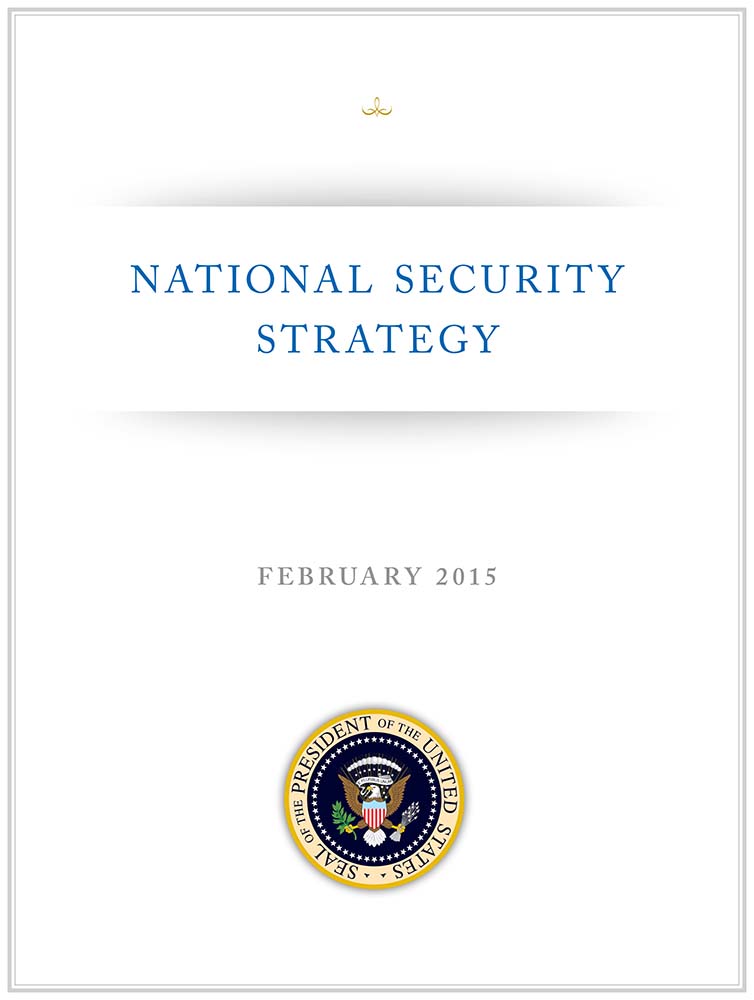
The 2015 National Security Strategy is “a vision and strategy for advancing the nation’s interests, universal values, and a rules-based international order through strong and sustainable American leadership,” according to the document itself.
The 2015 strategy, to address these concerns, is “a vision and strategy for advancing the nation’s interests, universal values, and a rules-based international order through strong and sustainable American leadership,” according to the document itself.
Whiteside discussed with the FAOs the ways and the means to achieve these goals.
“The ways are our campaigns. The means are our resources such as military units, diplomacy, money, unfettered access to markets, a secure homeland, and maintaining hegemony,” said Whiteside.
Whiteside further discussed instruments of national power, known as DIME – diplomacy, information, military and economics – and how they play in the most recent strategy.
“Though our interests may change from administration to administration, the themes do not,” said Whiteside.
Whiteside said that some new issues that future strategies should address should be the reorganizing of the Unified Combatant Commands, such as the forming of a U.S. Cyber Command and the combining U.S. Northern Command with U.S. Southern Command. The combatant commands reflect the National Security Strategy in their mission.
Whiteside is an Associate Professor at the Naval War College Monterey where he teaches national security affairs to military officers as part of their professional military education. He is also a retired U.S. Army officer with counterinsurgency experience in Iraq from 2006 to 2007.
Whiteside spoke as part of the FAO program’s monthly officer professional development program, which is a critical part of FAO training at DLIFLC. The monthly program is as an essential addition to the biannual Joint Foreign Area Officer Course Phase I, usually held in January and June.
FAOs, who come from the four branches of the U.S. military, are regionally focused and are considered experts on political-military issues. Once their FAO training is completed, they are expected to serve as defense attachés, security cooperation officers and political-military planners worldwide.
DLIFLC provides resident instruction in 23 languages at the Presidio of Monterey, California, with the capacity to instruct another 65 languages in Washington, D.C., graduating more than 200,000 linguists since 1941.
In addition, multiple language training detachments exists at sites in the U.S., Europe, Hawaii and Korea spanning all the U.S. geographic combatant commands, to support the total force.

